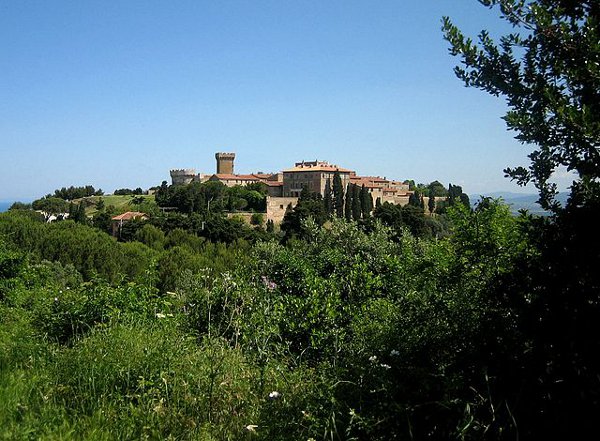According to Servius, a commentator of Virgil’s Aeneid, Populonia would be the first Etruscan city founded by a people from Corsica or Volterra. The excavations belie this version because the oldest tombs of Populonia are Villanovan period then you exclude interventions Corsican. In addition Volterra may not have founded Populonia because its tombs are more recent. Objects of polished stone suggest the existence of Populonia since the Neolithic Age. In the Villanovan period there were two appropriations working copper and two different nuclei fused together in a single city: Populonia.
The name Populonia (Pupluna) comes from the name of the god Fufluns, divinity initially linked to agriculture and then identified with Bacchus. The etymology of the name seems so connected with the fertility of the soil. Populonia is the only Etruscan town that was founded on the sea, the northernmost coastal lucumonia. Populonia was part of the 12 cities, a league of twelve religious – city-state – that would meet once a year at Voltumna (probably close to Lake Bolsena), site of a sanctuary here were performing religious rites, feasts and games and were taken by mutual agreement also political decisions.
Baratti-Populonia was divided into two parts: the upper part and the lower part. The upper part, corresponding to the acropolis, was inhabited by wealthy people who had the political power in the acropolis was also practiced the cult. The lower part was the land of the dead, the necropolis near it housed some of the poorest people. Here is also the industrial area, with ovens for metal working and, in the fourth century. BC Iron: the city was in fact flourishing in both the mining and industrial sectors. Populonia reached its maximum development and splendor in the fifth century. BC, thanks to the intense trade with Greece.
The Etruscans believed that the dead continue to live in the graves, the dead were buried in fact a funeral staff. The Etruscans were a people lover of life’s pleasures, the frescoes in fact often have as a theme in sumptuous banquets attended by both men and females. The cultural heritage of this people is so vast and rich that Rome I was so fascinated and influenced by many aspects to their culture and architecture of this civilization.

